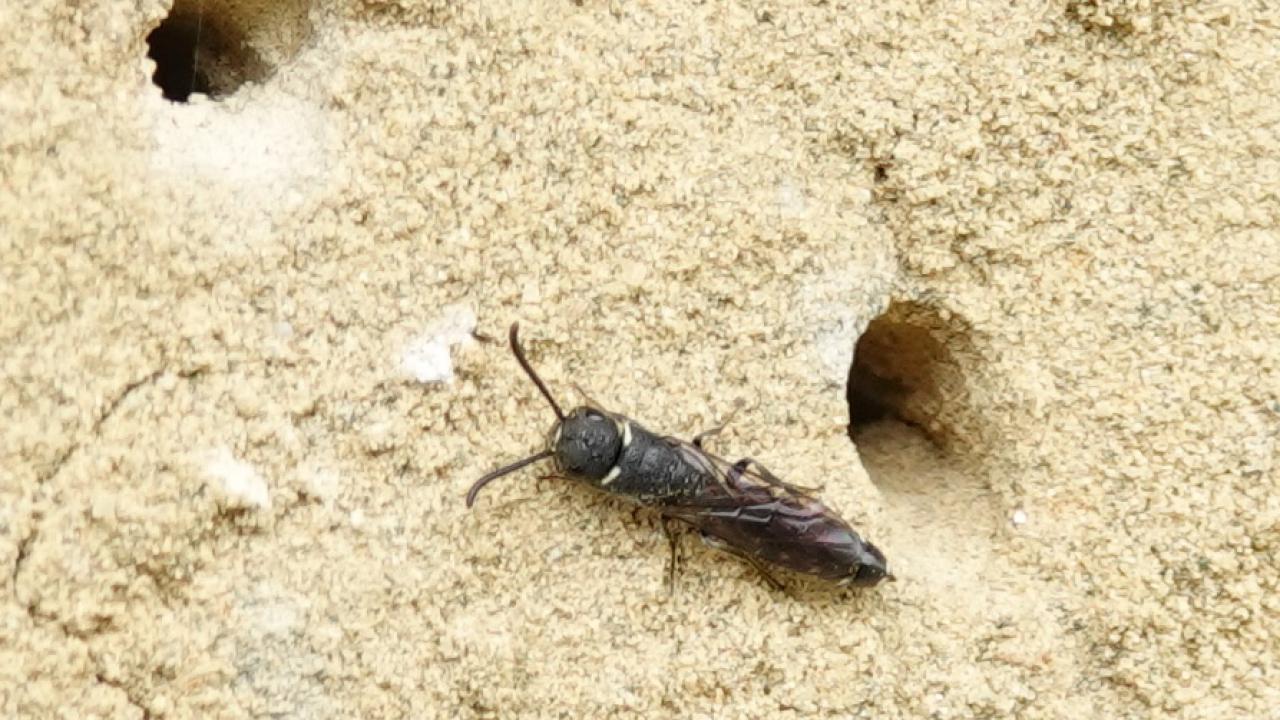Description:
Sapygina decemguttata belongs to the family Sapygidae: wasps with a slender, tubular body with yellow, white or red markings on a black body.
Sapygina decemguttata has white spots on the black abdomen; both females and males do not exceed 1 cm.
The majority of these species parasitize in solitary bee nests.
Sapygid wasps lay their eggs in the cells of bee nests, which have already been provided with food (pollen) by the bee for its own offspring.
Shortly after this, the bee lays her egg in the nest cell and closes the cell.
After a few days, the sapygid wasp larva hatches (before the bee larva hatches), after which it sucks out the bee egg and then consumes the food intended for the bee larva.
Landgoed Oostbroek, De Bilt, The Netherlands, 27 June 2023



